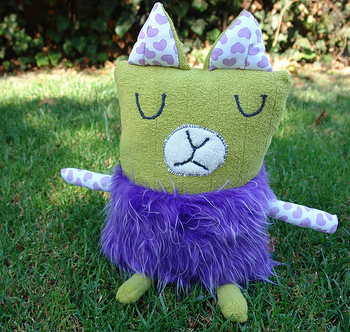
When you fight against yourself, you’re guaranteed to lose.
My awesome coach, Jonathan, pointed this out to me last week. It’s true. Even if it’s a tie, you still lose, because you’ve wasted all that energy.
I’ve been fighting against myself a lot over the past few months, and it’s really been holding me back. But I think I’ve had a beginning insight on how to let go of the struggle and get in harmony with myself. I often feel like I need to fully understand something before I write about it, but in case you’re engaged in the same struggle, I want to share this now, not someday when I have it all figured out (i.e., maybe never).
For me, a major part of the struggle is fighting against my feelings. I know a lot of tricks for thwarting bad feelings, and sometimes they’re really handy.
A big part of that is stopping yourself from manufacturing unpleasant feelings where there were none. So many times, we get upset purely because of what we tell ourselves about a situation. That’s a huge waste of energy, and it’s useful to be able to talk yourself down from it.
But sometimes, the feelings just show up. We didn’t make them, but they’re there, and all the disputing, positivity, and pep-talking we might try simply doesn’t work.
I think one of the hazards of wanting to be happy and working toward that is that we can get so caught up in it, it becomes another thing we judge ourselves about. Like, I know all this stuff about happiness, so why am I still being tossed around by these unhappy feelings? I should know better than this–what’s wrong with me? It feels like a failure.
What’s more, if we get too caught up in wanting to get rid of feelings, we forget that they have a purpose. Our feelings are there to point out to us when something is wrong (or right!).
For example, I used to fight really hard against anger. I thought that good and virtuous people are patient and kind and overflowing with God’s love. If I was angry, that was the opposite, so I must be a bad person. But I really wanted to be a good person, so I struggled as hard as I could to try to wrestle myself into being patient, kind, and overflowing with love.
Needless to say, it didn’t work. The problem was, I was angry because I was being mistreated and not getting my needs met. The anger was there to point out to me that something wasn’t working. Until I addressed the cause of the anger, I could wrestle all day, but all I’d accomplish was wearing myself out and turning up the pressure.
I think it’s important to distinguish between emotional reasoning and using your feelings as a guide. Emotional reasoning is a cognitive distortion where we assume our feelings indicate the ultimate truth of a situation. For example, if you feel angry and therefore conclude that you must have been wronged, that’s emotional reasoning. Or because you feel hopeless, you conclude that your problems are insurmountable and you might as well give up. That’s a self-reinforcing way to lead yourself astray.
But using your feelings as in indicator is different. Instead of treating them as an oracle, you can treat them as a sign post. You look for what they have to tell you without blindly doing their bidding.
To do this, the first step is awareness. Notice your feelings and label them. If you’re not sure what’s going on, pay attention to your body. How do you feel physically? Look for pain or a feeling of tightness. Where is it in your body? What emotion might that physical sensation indicate?
For example, I often feel tension in my stomach when I’m anxious about something. When I’m sad, my chest or throat feels tight. When I’m hurt, sometimes I feel a pain behind my eyes. When I’m really happy, I may feel a tingling on the back of my neck and shoulders, or an openness about my chest.
Once you’ve recognized your feeling, you can consciously choose to be open to what it has to tell you, rather than fighting it. Ask yourself, “Why do I feel this way? What’s going on?” Listen for an answer. If nothing comes to you, you may be afraid of the answer, or of being wrong. It’s ok; just guess. If you had to guess, what would you say is behind this feeling?
Keep going deeper until you feel satisfied that you have the true answer. Sometimes, that’s all it takes.
Sometimes, though, there’s still more feeling there, and you can’t release it until you feel it fully. We’re often afraid of the pain of feeling our feelings fully, so we try to stuff them down or talk ourselves out of what we’re feeling. That just makes things worse.
I experienced this last week: I was feeling down and couldn’t seem to shake it. I went for a walk in the woods, but as I was walking, I felt like I was fighting back tears the whole time. That gets old fast, so I decided to try this technique I just read about.
It’s called the Center of Remaining Energy (CORE) technique. It guides you to feel your feelings fully so that they can disperse. Here’s what you do:
- Sit in a comfortable spot with your eyes closed.
- Notice the uncomfortable feeling and where it resides in your body.
- Zoom in: where is it most intense?
- Move your awareness to the center of the most intense part of the feeling. You may find something that feels like the eye of the hurricane at the center of your feeling, at the most intense part. Lean into it and feel it fully for a few minutes.
- Notice whether the sensation is getting more intense, less intense, or staying the same.
- Keep feeling into the center of the intensity of the sensation, until you’ve felt it all and there’s nothing left in that spot.
- If any of the feeling remains, move your awareness to the center of that and feel it completely.
- Keep repeating until you feel resolved.
- Sit comfortably for a few more minutes before moving on.1
When I tried this, I sat down by a spring in the woods, where I could listen to the water trickling. I asked myself what was wrong and identified the roots of my sadness and anxiety. Then, I focused my attention on the sensation.
It was most intense in my chest, so I focused on that. I felt the sadness, and my tears burst out. It hurt, but a lot less than I expected. The amazing thing was how much less uncomfortable it was to feel the sadness and anxiety than to fight against it. I refocused a few times and the sensation dissipated within a few minutes.
I was pleasantly surprised at how little time it took to fully feel the emotions. Normally, I’d walk around all day not-quite-feeling something like this; instead, I felt it fully for less than five minutes, and then the cloud lifted and I was free.
Everything seems to be pointing me in the direction of mindfulness as a route to self-compassion and unconditional love. This seems like the first tiny step. As I learn more, I look forward to sharing it with you.
Meanwhile, if you think this might help others, please pass it on. Click to tweet: ![]()
1 Love For No Reason: 7 Steps to Creating a Life of Unconditional Love by Marci Shimoff. Simon & Schuster, New York, 2010. pp. 115-116.

This so resonates with me right now. I’m actually working on a post entitled “Is Your Happiness Quest Making You Miserable?”
Those of us on self-improvement missions tend to feel guilty and like we’re doing something “wrong” by having blue days. So we try to ignore them, to push through them, but that just makes them linger and fester. I love your mindfulness routine for getting in touch with our negative emotions. I definitely need to give it a try myself.
It’s sort of a “what’s the worst that can happen” exercise–you allow yourself to dwell in the bad feeling, to experience it at its fullest, and by doing so, you’re able to distance yourself from it as it loses its power of you.
Yeah, exactly! I’m glad it’s not just me then, but also sorry that it’s not just me. 🙂 I hope you find the CORE technique as helpful as I have–it really blew me away that day in the woods.
Interesting. I have always found that if I can just shout for a minute when I’m angry or weep openly for a moment when I’m sad, that’s all I need. Too often, though, I don’t have the liberty to do that so it does get all bottled up. (It’s just not cool to start randomly shouting in front of small children…they’re always going to assume it’s because of them even if it’s because of work., for ex.) Glad it worked! I think it’s also important to think of happiness as not a constant state of bliss, but more as a feeling of general well-being. Within that, there will always be ups and downs and part of happiness is being able to accept those down feelings as well as the up ones. Great post!
Great points. Accepting things as they are and being willing to sit with them, even if you don’t like them (rather than struggling against them) is a big theme in the things I’m reading lately. Definitely not my customary control-freak, worry-wart way! It seems good, though.
Thanks, Jess!